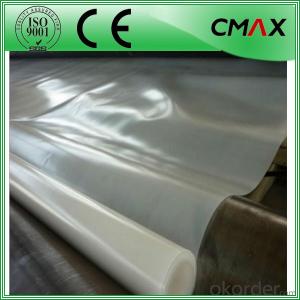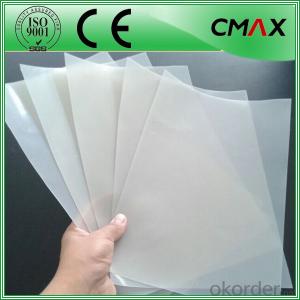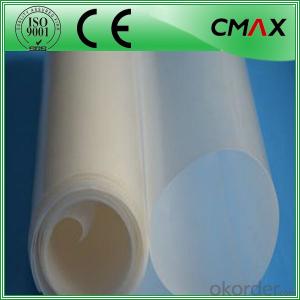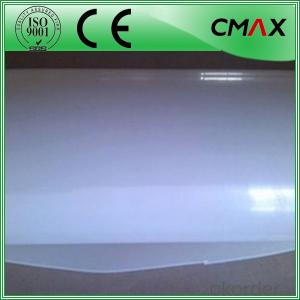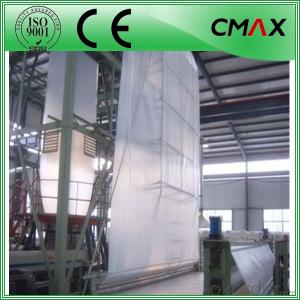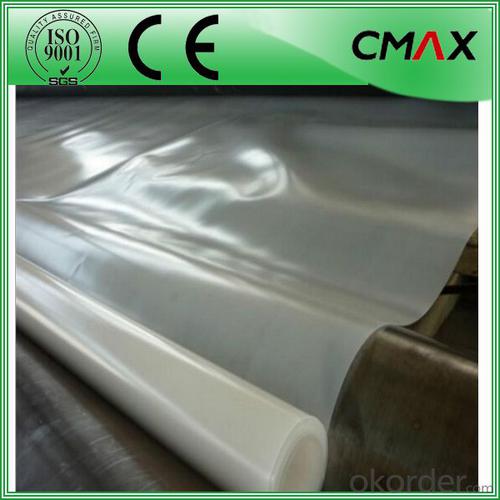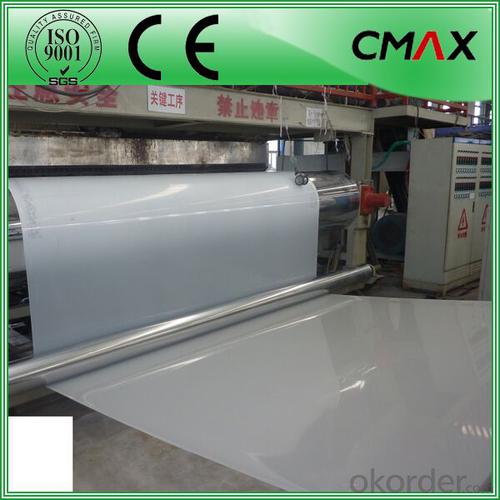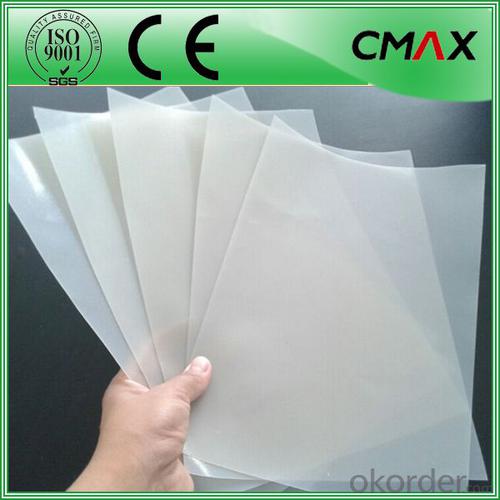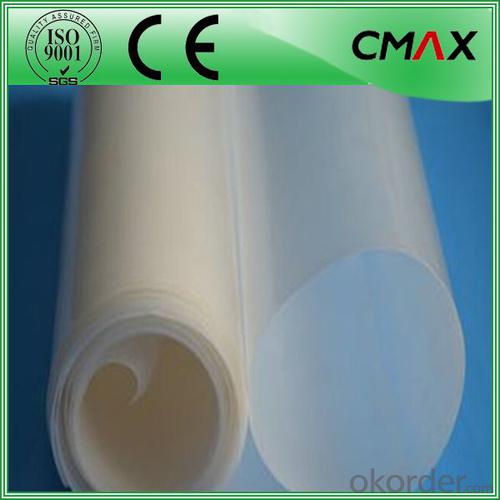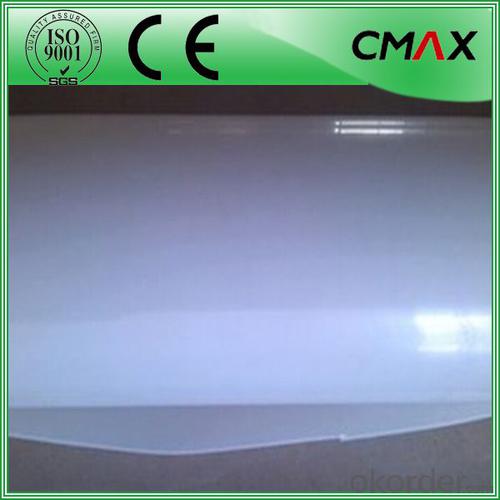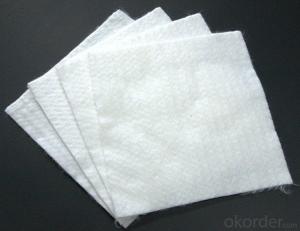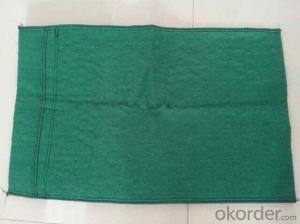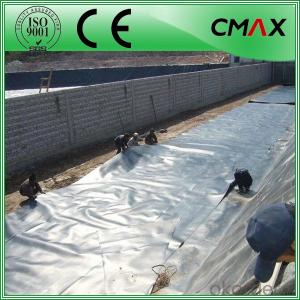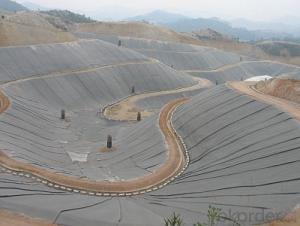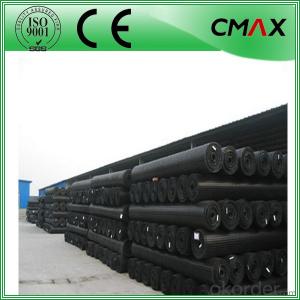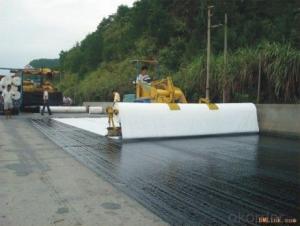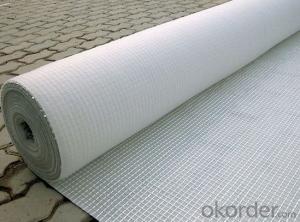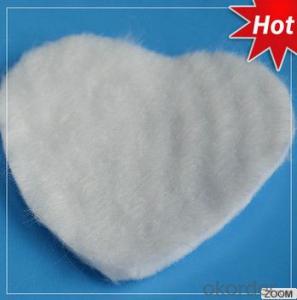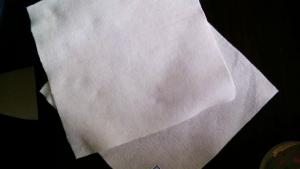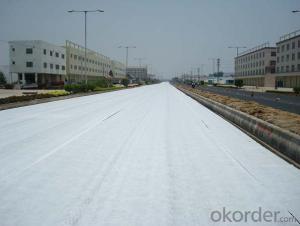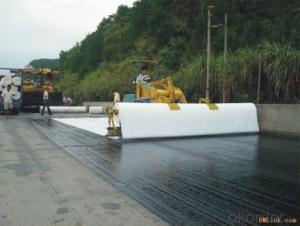Wholesale Geotextile for Artificial Pond Fish/Plastic Fish Ponds by the Biggest Liner Factory in China
- Loading Port:
- Tianjin
- Payment Terms:
- TT OR LC
- Min Order Qty:
- 100 roll
- Supply Capability:
- 20000 roll/month
OKorder Service Pledge
OKorder Financial Service
You Might Also Like
Artificial Pond Fish/Plastic Fish Ponds by the Biggest Liner Factory in China
Geomembrane Features:
Good mechanical properties, high tear strength, deformation and adaptable, puncture resistance, anti-aging, anti-ultraviolet-resistant, Anti oil and salt, pH, anti-corrosion, high temperature-resistant, non-toxic, long service life. water, drainage, seepage, the good effect of moisture, width, thickness of the full range of specifications and low cost, simple construction.
Specifications and Technical datas:
| Thickness | 0.15mm - 4.0mm |
| width | Within 8 m |
| length | 50-100m/roll (at request) |
| Material | HDPE,( LDPE, LLDPE, PVC, EVA ) |
| Color | Black , white , grey |
| Optional surface | Textued(one or two side) or smooth surface |
| Manufacturer | The biggest geomembrane liner manufacturer/factory in China for many years |
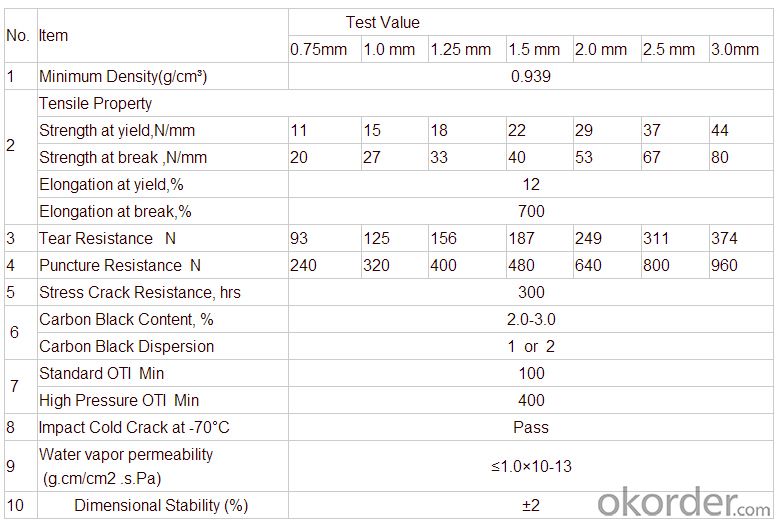
Details of our products:
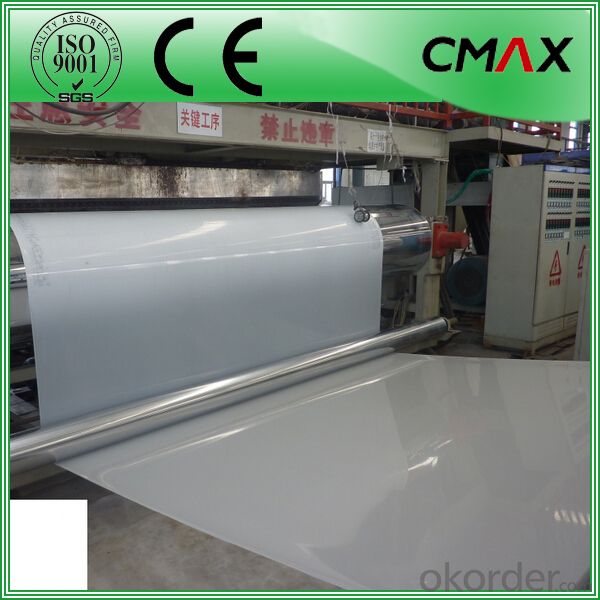
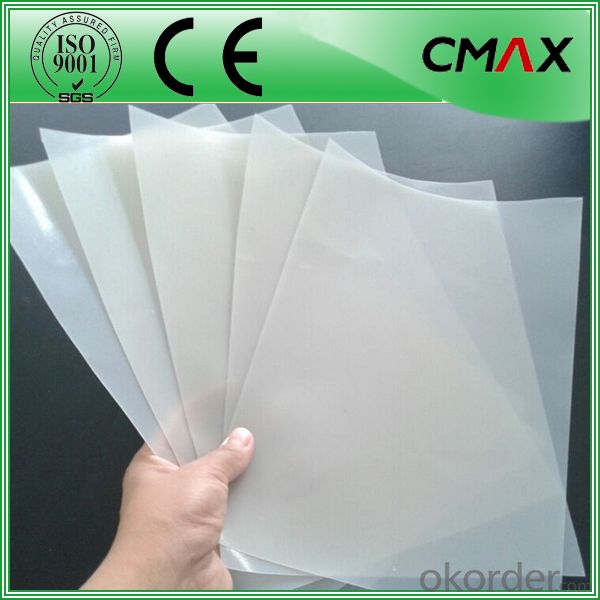
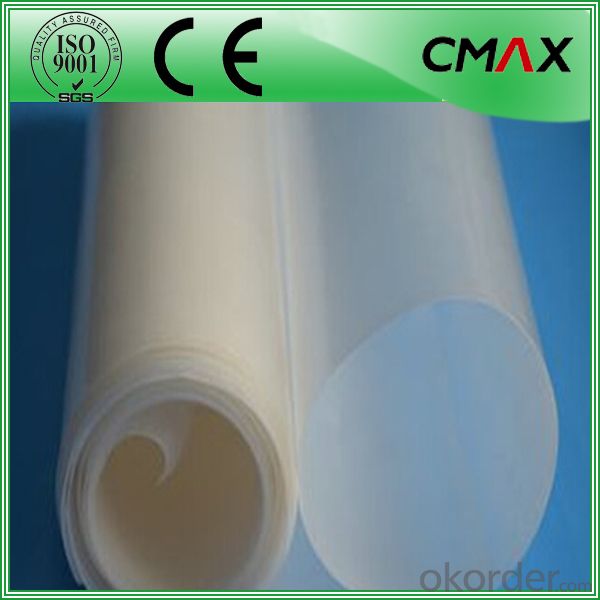
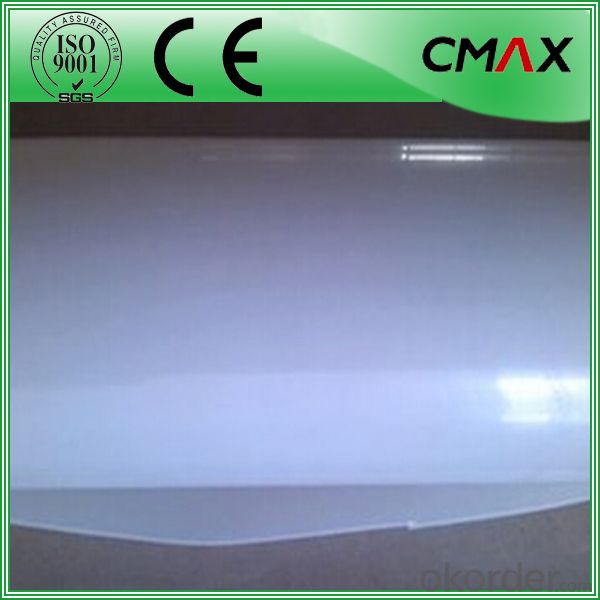
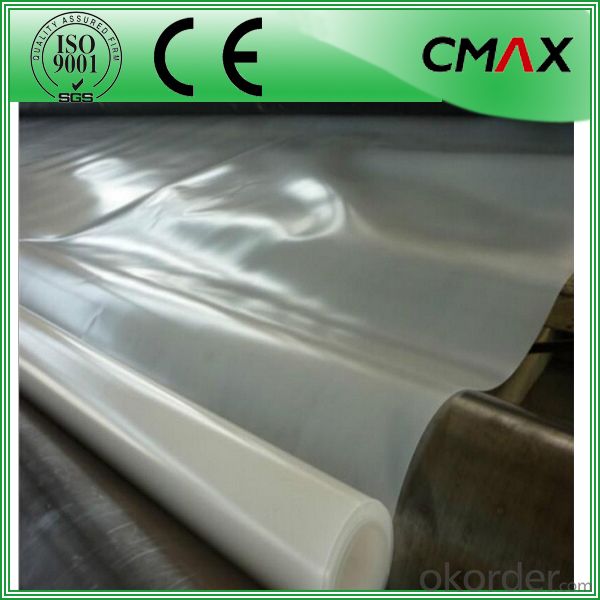
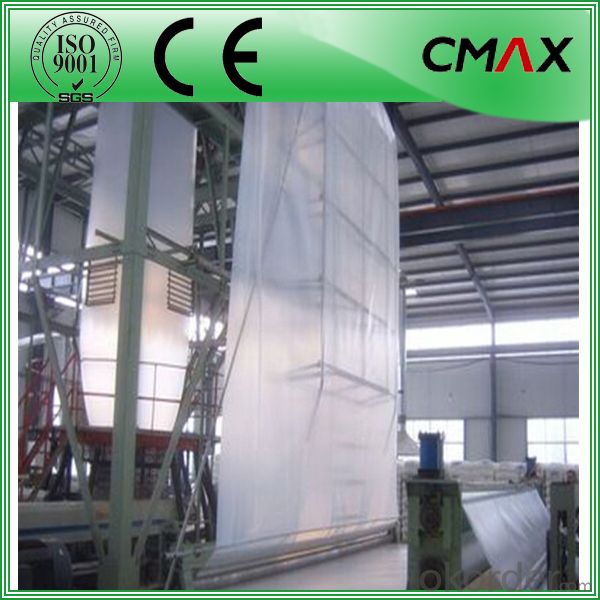
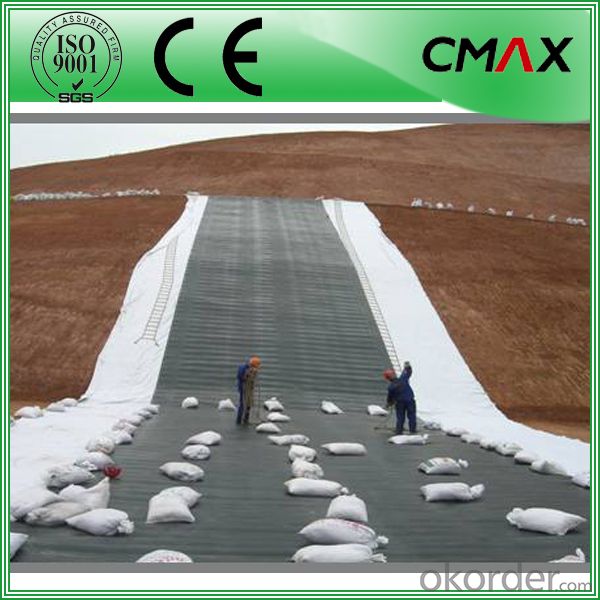
Applications:
1) Environmental protection, sanitation (such as solid waste landfills, sewage treatment plants, power plants Chi-conditioning, industrial, hospital solid waste, etc.) .
2) Water (such as rivers, lakes and reservoirs of the anti-dam, plugging, reinforcement of the canal seepage, the vertical wall of the heart, slope protection, etc.).
3) Municipal Engineering (subway, on the ground floor of the building, planted roof, the roof garden of anti-seepage, sewage pipes lining, etc.).
4) Landscape (man-made lake, river, reservoir, golf courses reservoirs of the substrate, slope protection, green lawn of the waterproof moisture, etc.).
5) Petrochemical (chemical plants, oil refineries, gas storage tanks of the anti-chemical reaction tanks, sedimentation tanks of the lining, etc.).
6) Mining (washing and pool heap leaching, the ash-field, dissolved, precipitation, the yard, the tailings seepage substrates, etc.) .
Packing and shipping:
1. The outer package: black or white woven geotextile.or we can make the package as your requst.
2. Different tgram/ roll size for different qty in the same containers.
3. Roll size: 3.95m*200 for container
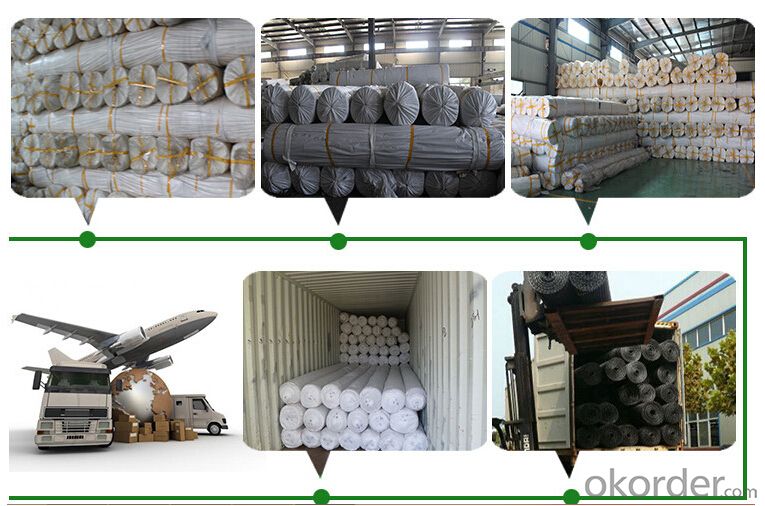
FAQ:
Q1: What is your minimum order quantity?
A:The minimum order quantity is 5000 ,but it is negotiable.
Q2:What is your payment terms?
A: T/T,Western Union,Paypal,L/C...
HDPE Geomembrane Price
Q3:What is your delivery time?
A:Production time usually costs 2-20 days.
Waiting to cooperate with you!
- Q: How do geotextiles aid in the reduction of pore water pressure?
- Geotextiles aid in the reduction of pore water pressure by acting as a drainage layer that allows water to flow through while preventing the migration of fine particles. This helps to alleviate the buildup of water pressure within the soil, reducing the risk of soil liquefaction or instability.
- Q: What are the applications of geotextiles in geotechnical engineering?
- Geotextiles have numerous applications in geotechnical engineering, including soil stabilization, erosion control, drainage systems, and filtration. These versatile materials can be used to reinforce weak soils, prevent soil erosion on slopes, and improve the overall stability of various structures, such as roads, embankments, and retaining walls. Additionally, geotextiles can act as filters to separate different soil layers, allowing for proper water drainage and preventing clogging. Overall, geotextiles play a crucial role in enhancing the performance and longevity of geotechnical projects.
- Q: Mainly on the cement concrete laying asphalt overlay and deck pavement, a bit puzzled, sticky words and how to design more
- Can be set together, geotextile in the lower layer can play a good pull, the role of protection!
- Q: How do geotextiles affect plant growth?
- Geotextiles can positively impact plant growth by providing a stable environment for roots, preventing soil erosion, and promoting moisture retention. Additionally, they control weed growth, regulate soil temperatures, and enhance nutrient availability, ultimately leading to healthier and more productive plants.
- Q: Geotextile water filter?
- Geotextile from the filter, filter the role of water, but soil, I am specializing in the production of geotextiles
- Q: Can geotextiles withstand harsh weather conditions?
- Yes, geotextiles are designed to withstand harsh weather conditions. They are made from durable materials that are resistant to UV rays, moisture, and temperature fluctuations, making them suitable for various environmental conditions. Additionally, geotextiles have high tensile strength and can resist damage caused by heavy rain, wind, and extreme temperatures, ensuring their performance and longevity even in harsh weather conditions.
- Q: Build drainage board + geotextile what specifications are required
- General garden greening, roof garden, underground garage roof above the use of the drainage board for the square, each block between the drainage board can be deducted from each other, the length and breadth of 500mm * 500mm, the thickness is divided into 20mm, 25mm, 30mm three, Different thickness of the drainage board price is different. There is also a three-dimensional drainage board, is also often used for landscaping, roof garden, underground garage roof, this three-dimensional drainage board has a good water storage, drainage, waterproof function. Dimensional length of the drainage board is generally 2000mm * mm (2m * 15m), the thickness of the plate is generally divided into 0.8mm, 1.0mm, 1.5mm three, the same thickness of the plate can also do different height of the bulging, The general height of the bubble 10mm, 20mm two. Various specifications of the three-dimensional drainage board prices are not the same. No matter what kind of drainage board are required to use geotextile to use, generally with the geotextile length of 6000mm * mm, 2000mm * mm, geotextile specifications for the 150g / ㎡ and 200g / ㎡ of the majority.
- Q: Geotextile laying should be beyond the edge of how to set the number of specific requirements? Which specification is more detailed
- Geotextile laying should be beyond the edge of how to set the number of specific requirements? You want to understand this situation, there is no clear norms, but can refer to the "garbage sanitary landfill seepage control system engineering technical specifications" (CJJ133-2007) 5.6.6 of the provisions of not less than 300mm is possible The Article 5.6.6 of CJJ133-2007 states that: ... the repair range shall be greater than 300mm around the breakage range.
- Q: Can geotextiles be used in the protection of groundwater sources?
- Yes, geotextiles can be used in the protection of groundwater sources. Geotextiles are permeable fabrics that can effectively filter and separate soil particles, preventing them from contaminating groundwater sources. They can be used in various applications such as erosion control, drainage systems, and landfill liners to ensure the protection and preservation of groundwater quality.
- Q: What are the considerations for geotextile selection in coastal engineering projects?
- When selecting geotextiles for coastal engineering projects, several considerations need to be taken into account. First, the geotextile should have a high tensile strength and durability to withstand the harsh coastal environment, including wave action and fluctuating water levels. It should also possess excellent filtration properties to prevent the migration of fine particles while allowing water to pass through. Additionally, the geotextile's permeability and hydraulic conductivity should be considered to ensure proper drainage and avoid the buildup of hydrostatic pressure. The material's resistance to biological degradation and UV radiation is crucial for long-term performance. Lastly, the geotextile should be compatible with the surrounding materials and easy to install and maintain, minimizing disruptions to the coastal ecosystem and reducing overall project costs.
Send your message to us
Wholesale Geotextile for Artificial Pond Fish/Plastic Fish Ponds by the Biggest Liner Factory in China
- Loading Port:
- Tianjin
- Payment Terms:
- TT OR LC
- Min Order Qty:
- 100 roll
- Supply Capability:
- 20000 roll/month
OKorder Service Pledge
OKorder Financial Service
Similar products
Hot products
Hot Searches
Related keywords
